Mitrephora wangii is a species of plant in the family Annonaceae. It is native to China and Thailand.
Mitrephora alba is a species of plant in the family Annonaceae. It is native to Peninsular Malaysia. Henry Nicholas Ridley, the English botanist who first formally described the species, named it after its white flowers.
Mitrephora glabra is a species of plant in the family Annonaceae. It is native to Borneo. Rudolph Scheffer, the Dutch botanist who first formally described the species, named it after its hairless leaves and mature twigs.

Mitrephora heyneana is a species of plant in the family Annonaceae. It is native to India and Sri Lanka. Joseph Dalton Hooker and Thomas Thomson, the British botanists who first formally described the species under the basionym Orophea heyneana, named it after Benjamin Heyne a German botanist who collected and described many plant species from India.

Mitrephora keithii is a species of plant in the family Annonaceae. It is native to Myanmar, Peninsular Malaysia and Thailand. Henry Nicholas Ridley, the English botanist who first formally described the species, named it in honor of Dr. A. Keith who collected the sample that Ridley examined.
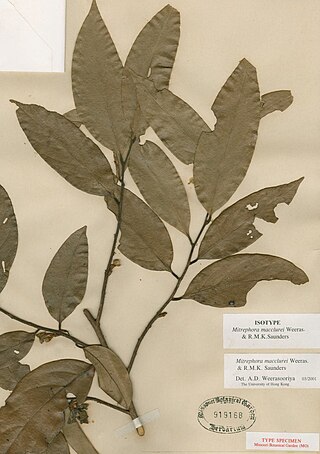
Mitrephora macclurei is a species of plant in the family Annonaceae. It is native to China, Laos and Vietnam. Aruna Weerasooriya and Richard Saunders, the botanists who first formally described the species, named it after Floyd Alonzo McClure of Lingnan University, who collected the holotype specimen that they examined.
Mitrephora calcarea is a species of plant in the family Annonaceae. It is native to Laos and Vietnam. Aruna Weerasooriya and Richard M.K. Saunders, the botanists who provided the first valid formal description of the species, named it after the limy soil it grows in. The name follows a prior invalid account by Suzanne Jovet-Ast, which lacked a Latin description.
Mitrephora macrocarpa is a species of plant in the family Annonaceae. It is native to Sulawesi. Friedrich Anton Wilhelm Miquel, the Dutch botanist who first formally described the species using the basionym Orophea macrocarpa, named it after its large fruit.
Mitrephora petelotii is a species of plant in the family Annonaceae. It is native to Vietnam. Aruna Weerasooriya and Richard Saunders, the botanists who first formally described the species, named it in honor of the French botanist Paul Alfred Pételot, who collected the holotype specimen that they examined.
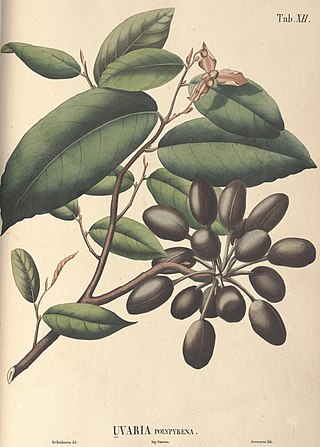
Mitrephora polypyrena is a species of plant in the family Annonaceae. It is native to Java, the Lesser Sunda Islands, and Myanmar. Carl Ludwig Blume, the German botanist who first formally described the species using the basionym Uvaria polypyrena, named it after the many stones or seeds in its fruit.
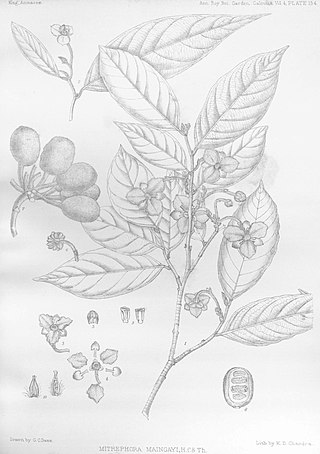
Mitrephora maingayi is a species of plant in the family Annonaceae. It is native to Bangladesh, Borneo, Cambodia, Laos, Peninsular Malaysia, Myanmar, Sumatra, and Vietnam. Joseph Hooker and Thomas Thomson, the British botanists who first formally described the species, named it in honor of Alexander Carroll Maingay, the British botanist who collected the specimen they examined.
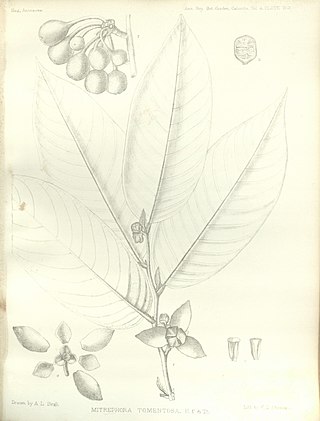
Mitrephora tomentosa is a species of plant in the family Annonaceae. It is native to Bangladesh, Cambodia, Laos, Myanmar, Thailand, and Vietnam. Joseph Hooker and Thomas Thomson, the British botanists who first formally described the species, named it after the dense covering of hair on its young branches, leaves and flowers.

Mitrephora winitii is a species of plant in the family Annonaceae. It is native to Myanmar and Thailand. William Grant Craib, the British botanist who first formally described the species, named it after Phya Winit Wanandor, the Thai botanist who collected the specimen that Craib examined. In the Prachuap Khiri Khan province of Thailand it is commonly referred to as Mahaphrom.
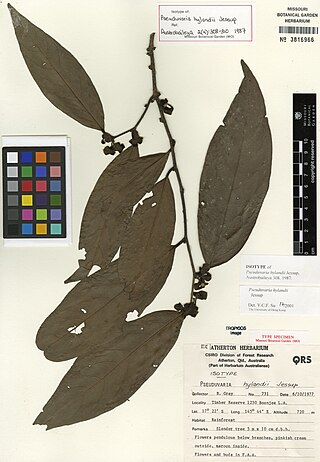
Pseuduvaria hylandii is a species of plant in the family Annonaceae. It is native to Australia. L.W. Jessup, the botanists who first formally described the species, named it after Bernard Hyland an Australian botanist who collected the specimen he examined.
Pseuduvaria kingiana is a species of plant in the family Annonaceae. It is native to the Malay Peninsula. Yvonne Chuan Fang Su and Richard Saunders, the botanists who first formally described the species, named it after Sir George King, the British botanist who first collected the species.
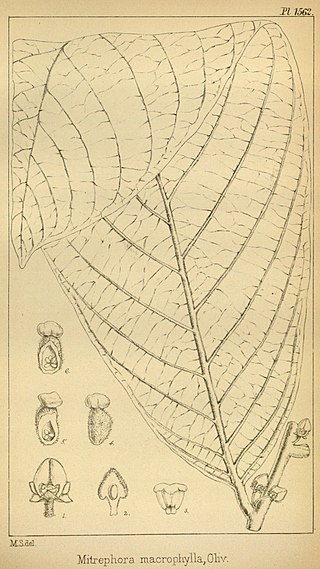
Pseuduvaria macrophylla is a species of plant in the family Annonaceae. It is native to Peninsular Malaysia, Sumatra and Thailand. Daniel Oliver, the English botanists who first formally described the species using the synonym Mitrephora macrophylla, named it after its large leaves.
Pseuduvaria mindorensis is a species of plant in the family Annonaceae. It is native to the Philippines. Yvonne Su and Richard Saunders, the botanists who first formally described the species, named it after the island of Mindoro where the specimen they examined was collected in the municipality of Puerto Galera.

Pseuduvaria multiovulata is a species of plant in the family Annonaceae. It is native to Myanmar. Cecil Fischer, the Indian botanist who first formally described the species using the basionym Mitrephora multiovulata, named it after its many ovuled ovaries.
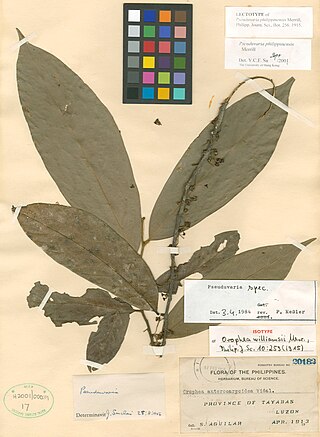
Pseuduvaria philippinensis is a species of plant in the family Annonaceae. It is native to the Philippines. Elmer Drew Merrill, the botanist who first formally described the species, named it after the Philippines where the specimen he examined was collected in the Province of Quezon.
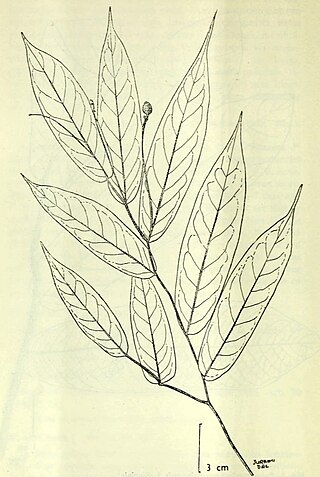
Pseuduvaria sessilifolia is a species of plant in the family Annonaceae. It is native to New Guinea. James Sinclair, the botanist who first formally described the species, named it after its stalkless leaves which lack petioles.












